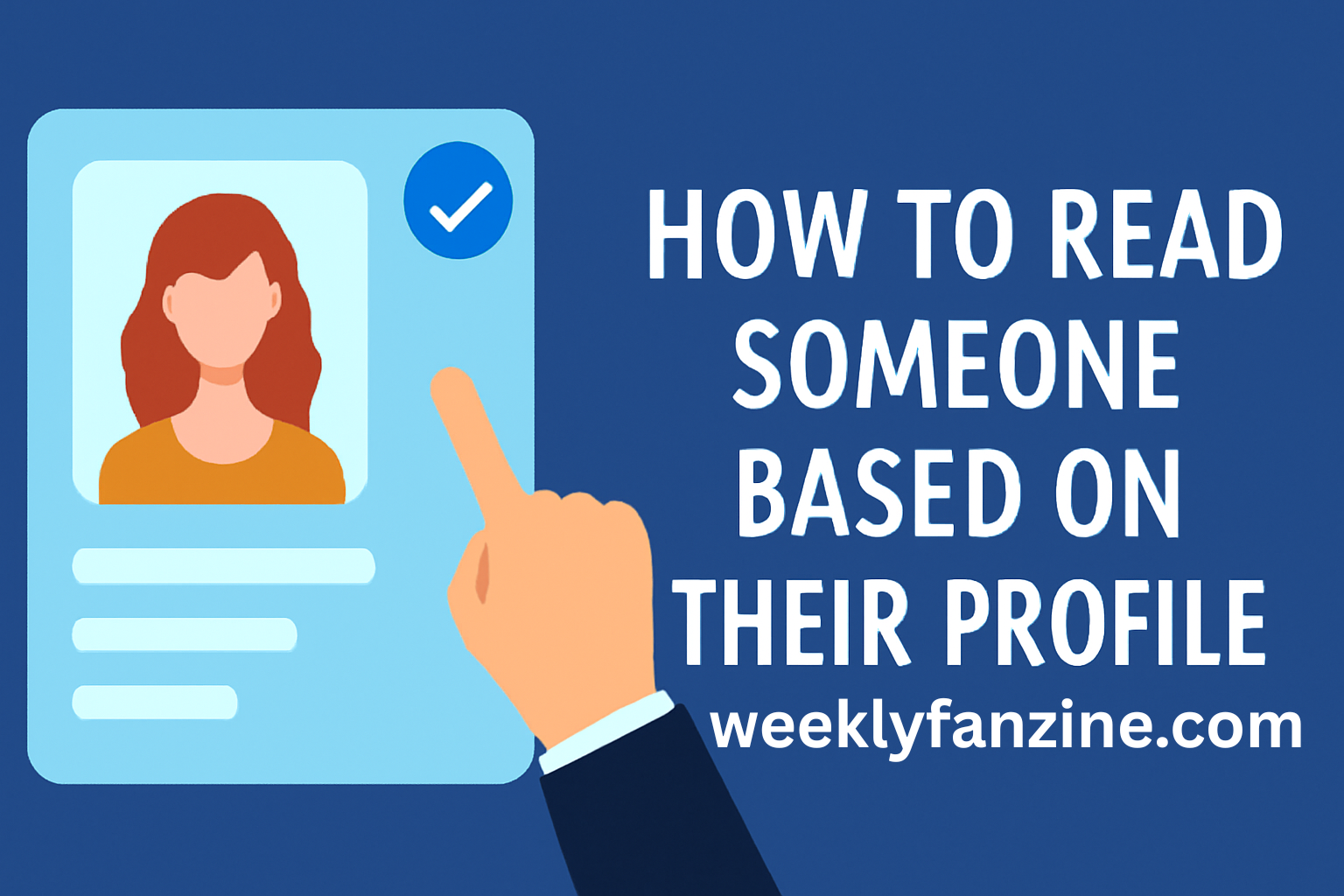How to Read Someone Based on Their Profile
In today’s digital world, online profiles are often the first point of contact between individuals. Whether it’s for social media, job hunting, or online dating, the profile a person creates can give significant insight into their personality, interests, and intentions. By carefully analyzing someone’s profile, you can often gain a deeper understanding of who they are, even if you haven’t met them in person. Here’s a comprehensive guide on how to read someone based on their profile.
1. The Power of the Profile Picture
The profile picture is often the first thing you notice about someone’s profile. It can offer clues about their self-perception, confidence, and how they want to be viewed by others. Here are a few things to consider:
- Clarity and Quality: A clear, well-lit picture usually indicates that the person is confident and takes pride in their appearance. On the other hand, blurry or overly edited photos might point to insecurity or a desire to hide certain aspects of themselves.
- Setting and Clothing: The background and attire in the profile picture provide context. For instance, someone posing in a professional setting with formal clothing may want to present themselves as professional and driven. If their setting is casual, it could suggest a more relaxed or easygoing personality.
- Body Language: Subtle cues in body language, such as a smile or posture, can offer additional insights. A person with crossed arms might come across as defensive or closed off, while an open posture with a smile could indicate friendliness and approachability.
2. Bio or “About Me” Section: The Heart of Their Personality
The “About Me” section is a goldmine when it comes to understanding someone’s personality. It offers direct insight into how they see themselves and how they want others to perceive them. Here’s how to analyze it:
- Language Style: The tone and language used can tell you a lot. Someone who uses formal, clear language may be organized and professional, while someone who writes in a more casual, laid-back manner may be easygoing and approachable. If their writing is humorous or playful, it might suggest a fun and light-hearted personality.
- What’s Highlighted: Pay attention to what the person chooses to highlight. Someone who talks about their career, achievements, or ambitions may prioritize success and growth. In contrast, if they mention hobbies like traveling or hanging out with friends, it may indicate a focus on experiences or relationships.
- Length of the Bio: A short bio can suggest that someone values privacy or isn’t interested in sharing too much. A long, detailed bio might indicate openness, but could also be an attempt to over-explain or compensate for something.
3. Interests and Hobbies: What Drives Them
Hobbies and interests listed on a profile are more than just casual activities—they often represent core parts of someone’s personality. Here’s how to interpret them:
- Adventurous Activities: If a person lists hobbies like hiking, traveling, or exploring new places, it may suggest an adventurous and spontaneous personality. They might enjoy new experiences and are likely to be open-minded.
- Intellectual Pursuits: Those who enjoy reading, learning, or engaging in intellectual discussions may value knowledge, curiosity, and mental stimulation. Their hobbies could indicate a more introspective or thoughtful nature.
- Creative Passions: People who list creative activities such as painting, writing, or music might be more emotionally expressive, imaginative, and passionate about their craft.
- Social Hobbies: If their interests center around social activities like sports, parties, or community involvement, they might be more extroverted and value relationships with others.
4. Language and Tone: A Window into Their Mind
How someone writes on their profile often says more than the words themselves. The tone they use can reveal their communication style, emotional state, and overall mindset.
- Positive or Negative Language: If someone uses mostly positive language, it could indicate optimism and a generally upbeat personality. Conversely, if they frequently use negative or cynical language, it might be a sign of someone who is more critical or pessimistic.
- Emotionally Expressive: Profiles that include personal anecdotes, emotional statements, or reflections often belong to people who are open and expressive about their feelings. They may value deep emotional connections.
- Formal or Casual: A more formal tone may indicate someone who is professional, reserved, or serious. A casual tone, with the use of emojis and informal language, might suggest someone who is easygoing, approachable, and enjoys fun.
5. Connections and Social Engagement
Analyzing the person’s social connections and interactions can give you additional insight into their social behavior and engagement with others. Look at:
- Number of Connections: A person with many connections or followers may be outgoing, network-driven, or focused on building an online presence. However, a small circle could indicate a preference for privacy or a selective social life.
- Social Interactions: How does the person engage with others? If they frequently comment, like, and interact with posts, it suggests a social, engaged individual. Minimal interaction could mean they are more private or perhaps less interested in building a large social network.
- Types of Connections: Who are they connected to? A network of professionals suggests a career-focused individual, while a network of friends and family might reflect someone who values personal relationships.
6. Consistency Across Platforms
To get a clearer picture of someone’s personality, compare their profiles across different platforms. Consistency in language, tone, and themes often suggests authenticity. However, slight variations are natural. If you notice major discrepancies—such as a highly professional LinkedIn profile that contrasts sharply with a more casual dating profile—it could be intentional or indicative of different sides of their personality.
7. Red Flags to Watch Out For
While reading someone’s profile, it’s important to be mindful of red flags—indicators that something may be off or that the person may not be genuine:
- Overly Generic Statements: Phrases like “I love traveling and trying new things” or “I’m passionate about life” can seem empty or insincere. Look for profiles with more specific details that show a true sense of individuality.
- Excessive Self-Promotion: If a person constantly brags or talks about their accomplishments without any humility, it could be a sign of insecurity or an inflated sense of self-importance.
- Contradictory Information: If someone’s profile contains inconsistent details, such as listing a full-time job on one platform and claiming to be a freelancer on another, it might suggest dishonesty or confusion.
8. Context Matters
Understanding the context behind the profile is crucial. The purpose of the profile will affect how it’s written and what is highlighted. For example:
- Professional Platforms (LinkedIn): These profiles will focus on work-related accomplishments, education, and skills. If someone overshares personal information in this context, it could indicate a lack of boundaries.
- Social Media (Facebook, Instagram): These platforms showcase a more personal side of a person. You’ll likely see family, friendships, and lifestyle choices here.
- Dating Apps: Profiles on dating platforms will prioritize personality traits, interests, and intentions for romantic relationships. Pay attention to their tone and what they’re seeking, as it can reveal a lot about their approach to relationships.
9. Final Thoughts
Reading someone’s profile is not a foolproof method to understand their true character, but it offers a helpful first step. By focusing on small details—the choice of photo, tone, language, and hobbies—you can form an initial impression. Remember, online profiles only reflect a small part of a person’s life. The real understanding comes with direct interaction and time spent getting to know someone in different contexts.
Approach profile-reading with an open mind and caution, and avoid making snap judgments. Use the profile as a tool to gather insights and as a basis for further conversation or connection.


